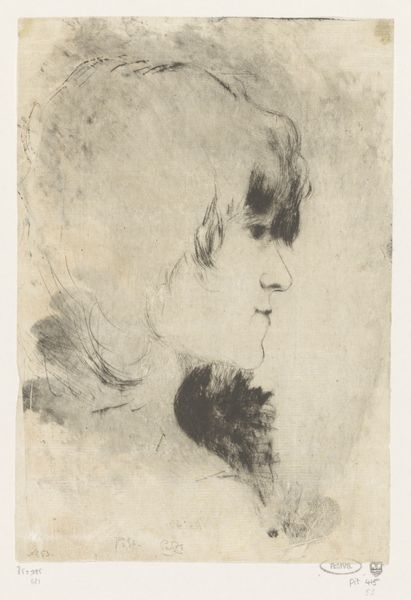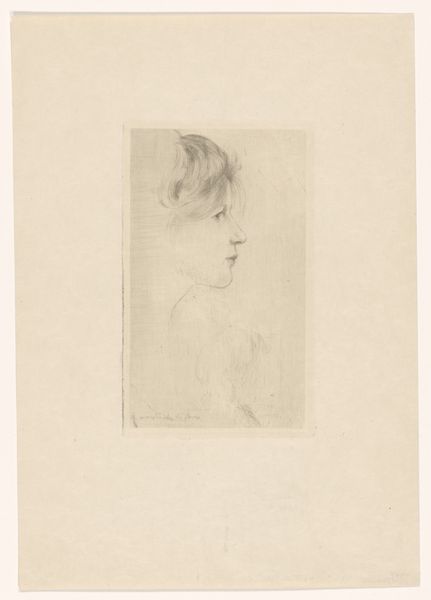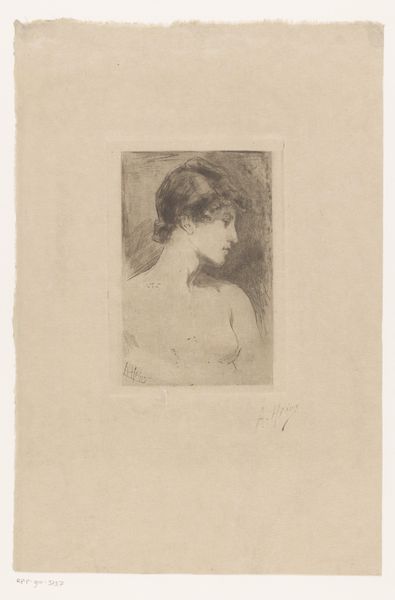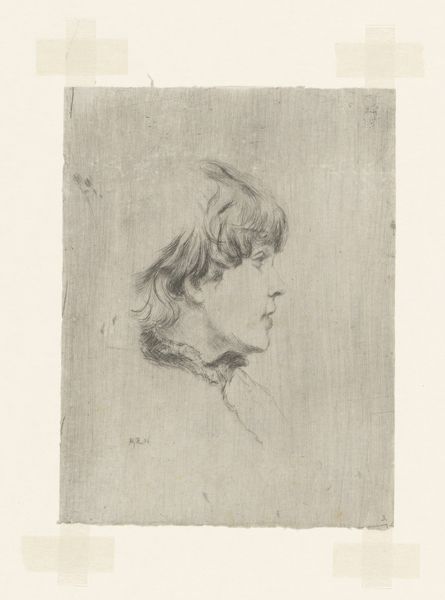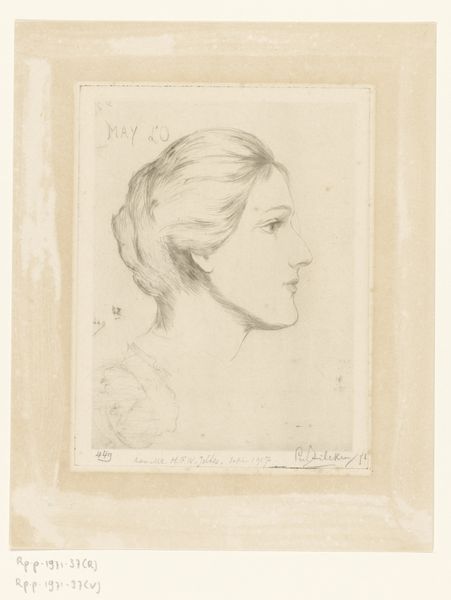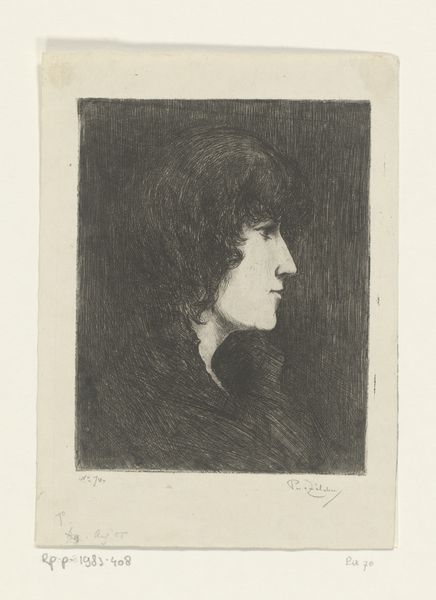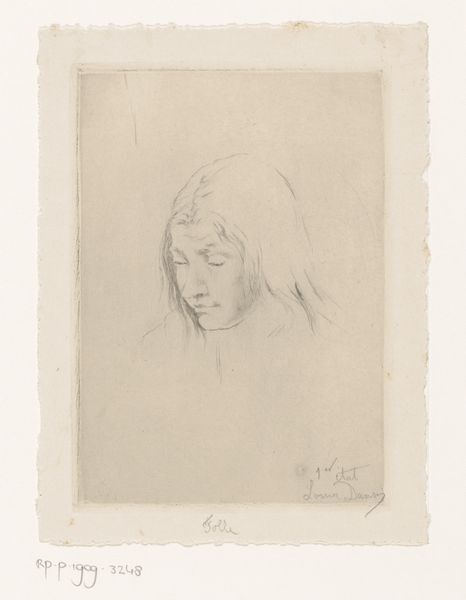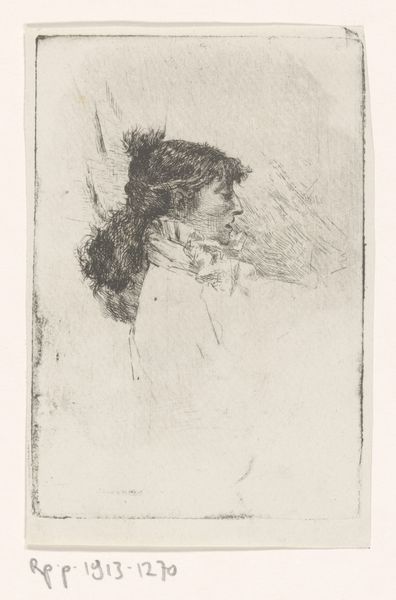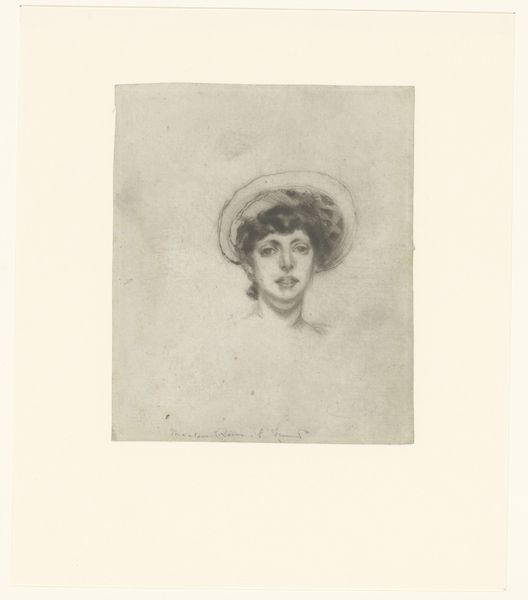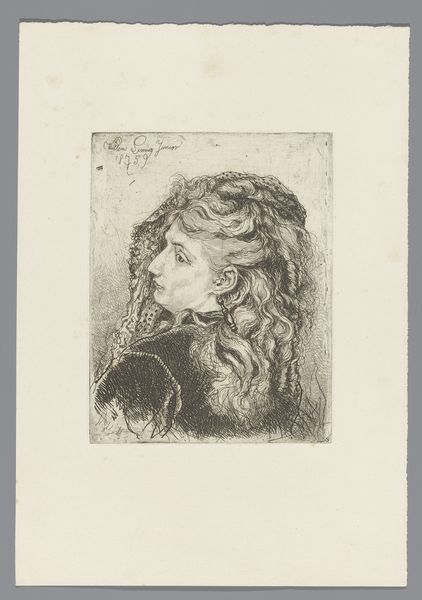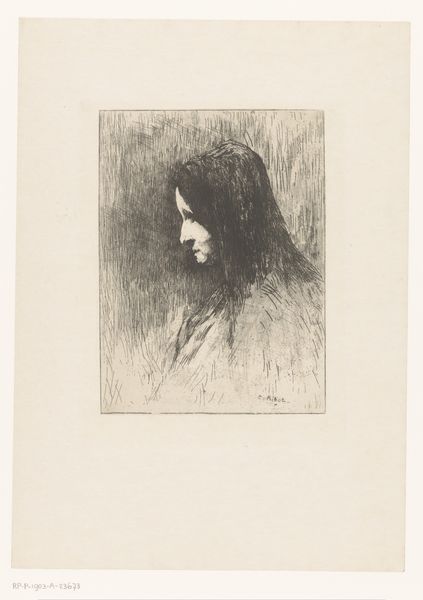
drawing, pencil
#
portrait
#
drawing
#
figuration
#
form
#
pencil drawing
#
pencil
#
line
#
academic-art
#
realism
Dimensions: height 199 mm, width 142 mm
Copyright: Rijks Museum: Open Domain
Editor: Here we have "Head of a Young Woman" a pencil drawing by Philip Zilcken, created sometime between 1867 and 1913 and currently residing at the Rijksmuseum. It's so delicate, almost dreamlike. I'm curious, what catches your eye when you look at it? Curator: It's fascinating how this simple pencil drawing reflects broader societal trends. Consider the rise of academic art in the late 19th century. Artists were striving for realism and technical skill, which Zilcken clearly demonstrates in his rendering of light and shadow, but beyond the technique, what role do you think portraits like these played? Editor: Well, maybe to capture an individual's likeness, preserving it for posterity, or maybe just for personal appreciation, like a family portrait. Curator: Exactly. Portraits often served as status symbols for the bourgeoisie and upper classes. This drawing, however, seems less about social status and more about capturing a sense of ephemeral beauty, a fleeting moment. Does her gaze project an interiority, a sense of individuality beyond the representational purpose? Or, considering the socio-political constraints of the time, could the portrait still reinforce an expected role for women in society? Editor: That's a great question. I think she looks a little defiant, almost challenging the viewer's gaze. So it’s more than just technique, the socio-political context also plays an important part. Curator: Indeed. By looking at who commissions and collects such pieces, we begin to understand its social value. Understanding who engages with an artwork contributes to an appreciation of its place within history and its effect on public life. Editor: This was an enlightening exchange. Thank you for showing me new perspectives on how socio-political forces and art can influence each other. Curator: And thank you for engaging with this piece with such thoughtfulness.
Comments
No comments
Be the first to comment and join the conversation on the ultimate creative platform.
